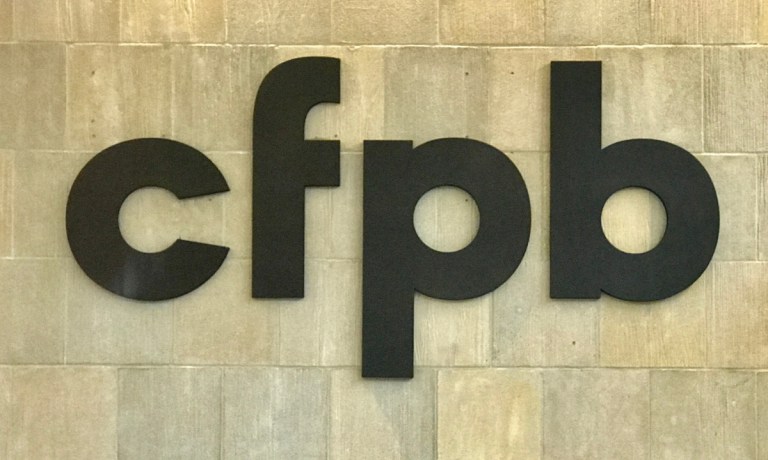CFPB Supreme Court Decision Shifts Focus to Technology’s Impact on Consumer Finance

The Consumer Financial Protection Bureau (CFPB) has been validated in the aftermath of last week’s U.S. Supreme Court rejection of a challenge to its congressional funding structure. But the ongoing debate over financial regulation and consumer protection will go on and the financial services industry and policymakers will continue to grapple with the implications of this decision and its impact on the broader regulatory landscape.
“Now that the CFPB is clearly constitutional, we get to have the process play out in what I call the normal way,” Amias Gerety, partner at venture capital firm QED Investors, told Karen Webster in the aftermath of the CFPB decision. “Now we should focus on debating whether their rules are good or bad ideas and find ways to use technology to make consumers’ lives better.”
Gerety, who worked at the U.S. Treasury and was senior adviser to the Assistant Secretary for Financial Institutions in the wake of the Financial Crisis in 2008, had a front row seat to the creation of the CFPB. His take on the decision — with a nod to the relatively brief majority decision penned by Justice Clarence Thomas — was that “this was not a complicated issue.” The law that created the agency’s funding — through the Dodd-Frank Act that created the financial regulator — was created in accordance with appropriations processes set in place by the Constitution.
Setting up the CFPB to be funded through the Federal Reserve did much to insulate the Bureau — in ways seen with the FDIC, OCC and the Social Security Administration — from the year-by-year “mother may I” system of yearly Congressional appropriations. The funding mechanism, he said, has precedent, as noted by Thomas in the Supreme Court decision, and as set forth by early the American establishment of the Customs Service and the Post Office.
And in fact, he told Webster, there’s nothing set in stone that says that the CFPB, even with its inherent power to examine and enforce certain rules, cannot find itself under more Congressional oversight as time goes on. For now, he said, the attention can settle on the actual rulemaking of the agency itself and the implications for the financial services industry. First, he believes, it will provide a sense of stability and predictability. Industry associations expressed support for the decision in its aftermath, recognizing the importance of having a stable regulatory environment where rules are not subject to sudden invalidation.
“A bunch of industry associations actually came together in support of the CFPB being constitutional precisely because they want it to be treated like a normal agency where they can rely on the rules,” Gerety said. “They never have to worry about a ‘deus ex machina’ lightning bolt that will evaporate all of the rules overnight.”
Implications and Injunctions
The CFPB’s legal wrangling is far from over, even if the dust at the highest court in the land has settled. There’s a preliminary injunction in place against new credit card late fee caps. Elsewhere, there are other avenues by which challenges to the CFPB’s regulatory actions might be lobbed. The CFPB, as Gerety said, is subject to the Administrative Procedure Act and the small business review process, which focus on the impacts that come with any new rules from the CFPB.
Said Gerety: “The CFPB actually has ‘extra’ oversight” in place “and can be subject to litigation…the CFPB’s rules are subject to cost-benefit analysis that no other banking agency is subject to.” With the regular channels intact, he said, critics and supporters can joust about whether the downstream impacts of a given action are appropriate.
“But this is all just ‘normal’ agency territory,” said Gerety, and will lead to more debate over the specific activities and rulings from the Bureau. For example, the CFPB’s credit card late fee rules, which are still being litigated, offer a microcosm of how, why and where the attention should be paid when it comes to the CFPB’s actual attempts to redefine and direct how firms interact with their end-consumers. While critics might charge, and banks contend, that card fee caps might restrict access to credit and boost the cost of that credit, Gerety maintained that competition and technology are strong forces that might mitigate those concerns.
“Credit card late fees are determined more by the macro environment and by monetary policy,” said Gerety. And, in addressing concerns that bad behavior might be incentivized by the lack of late fees and penalties, Gerety maintained that the technology’s out there for banks and other firms to be proactively reaching out in real time — stopping transactions in the case of overdrafts and non-sufficient funds, for example, or offering short-term credit to help bridge the gap between expenses and money in the bank — to dissuade abuse of the system.
Gerety also highlighted the evolving role of technology in shaping financial services and regulatory approaches. Advances in FinTech have introduced new solutions for managing risk and providing consumer protection, challenging traditional regulatory frameworks.
“Banks today can prevent transactions from going through if there are insufficient funds, thanks to technology,” Gerety noted. “From a FinTech perspective, we think that the world of options — in terms of what’s possible — has changed a bit.”